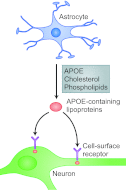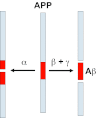Dysregulation of cholesterol balance in the brain: contribution to neurodegenerative diseases
- PMID: 23065638
- PMCID: PMC3484857
- DOI: 10.1242/dmm.010124
Dysregulation of cholesterol balance in the brain: contribution to neurodegenerative diseases
Abstract
Dysregulation of cholesterol homeostasis in the brain is increasingly being linked to chronic neurodegenerative disorders, including Alzheimer's disease (AD), Huntington's disease (HD), Parkinson's disease (PD), Niemann-Pick type C (NPC) disease and Smith-Lemli Opitz syndrome (SLOS). However, the molecular mechanisms underlying the correlation between altered cholesterol metabolism and the neurological deficits are, for the most part, not clear. NPC disease and SLOS are caused by mutations in genes involved in the biosynthesis or intracellular trafficking of cholesterol, respectively. However, the types of neurological impairments, and the areas of the brain that are most affected, differ between these diseases. Some, but not all, studies indicate that high levels of plasma cholesterol correlate with increased risk of developing AD. Moreover, inheritance of the E4 isoform of apolipoprotein E (APOE), a cholesterol-carrying protein, markedly increases the risk of developing AD. Whether or not treatment of AD with statins is beneficial remains controversial, and any benefit of statin treatment might be due to anti-inflammatory properties of the drug. Cholesterol balance is also altered in HD and PD, although no causal link between dysregulated cholesterol homeostasis and neurodegeneration has been established. Some important considerations for treatment of neurodegenerative diseases are the impermeability of the blood-brain barrier to many therapeutic agents and difficulties in reversing brain damage that has already occurred. This article focuses on how cholesterol balance in the brain is altered in several neurodegenerative diseases, and discusses some commonalities and differences among the diseases.
Figures




References
-
- Aqul A., Liu B., Ramirez C. M., Pieper A. A., Estill S. J., Burns D. K., Liu B., Repa J. J., Turley S. D., Dietschy J. M. (2011). Unesterified cholesterol accumulation in late endosomes/lysosomes causes neurodegeneration and is prevented by driving cholesterol export from this compartment. J. Neurosci. 31, 9404–9413 - PMC - PubMed
-
- Baudry M., Yao Y., Simmons D., Liu J., Bi X. (2003). Postnatal development of inflammation in a murine model of Niemann-Pick type C disease: immunohistochemical observations of microglia and astroglia. Exp. Neurol. 184, 887–903 - PubMed
Publication types
MeSH terms
Substances
Grants and funding
LinkOut - more resources
Full Text Sources
Other Literature Sources
Medical
Miscellaneous

